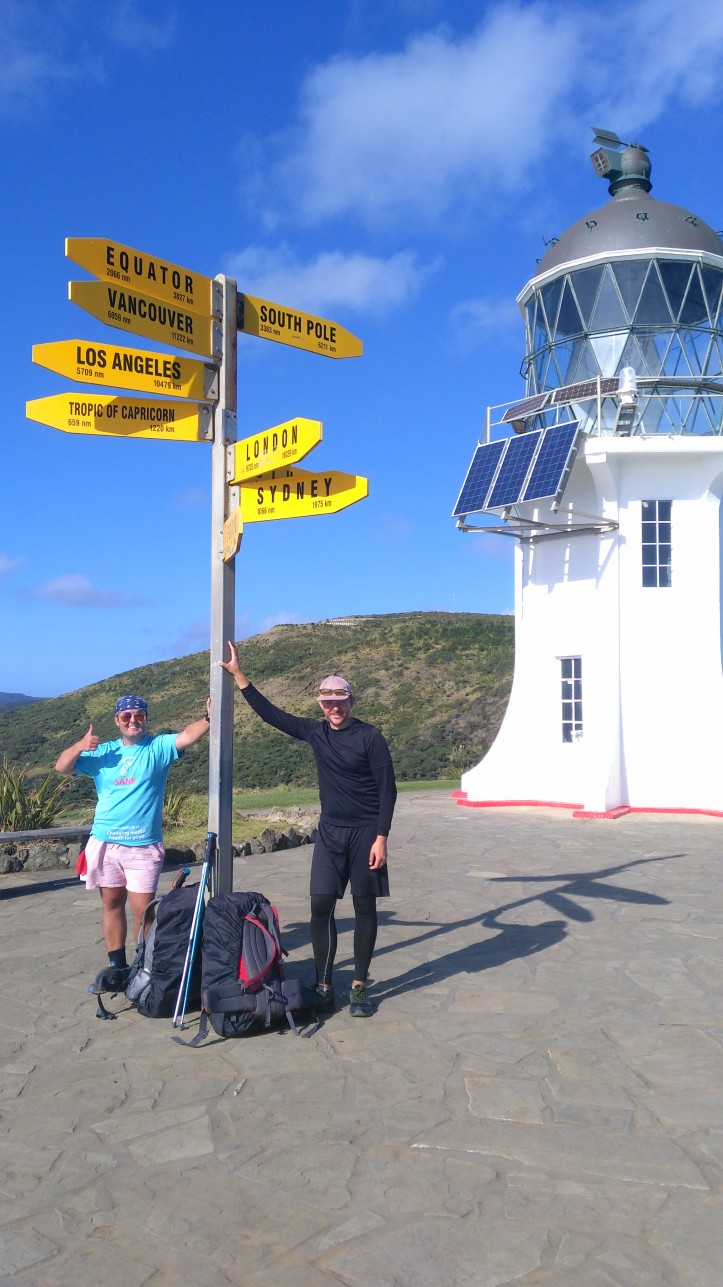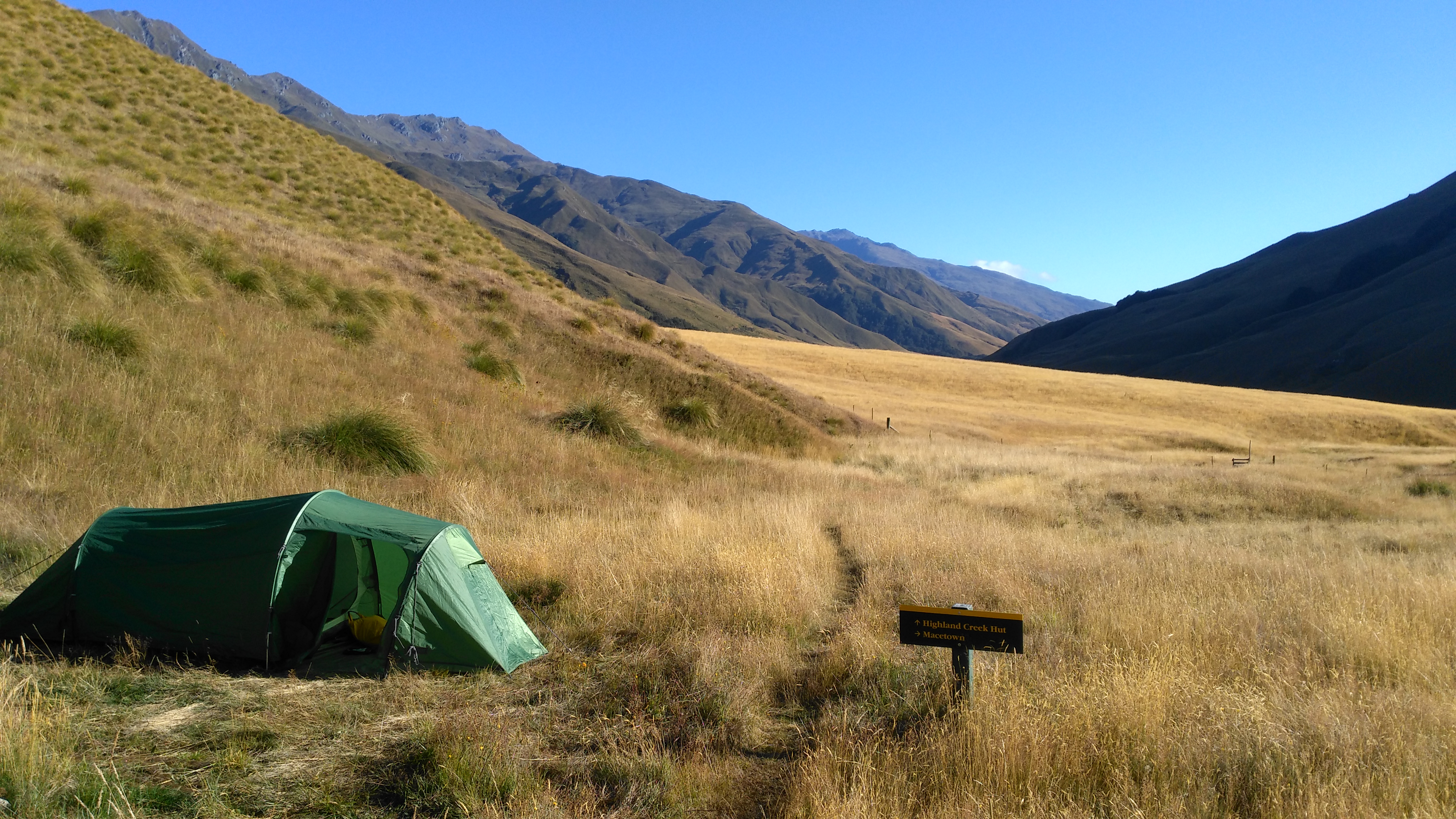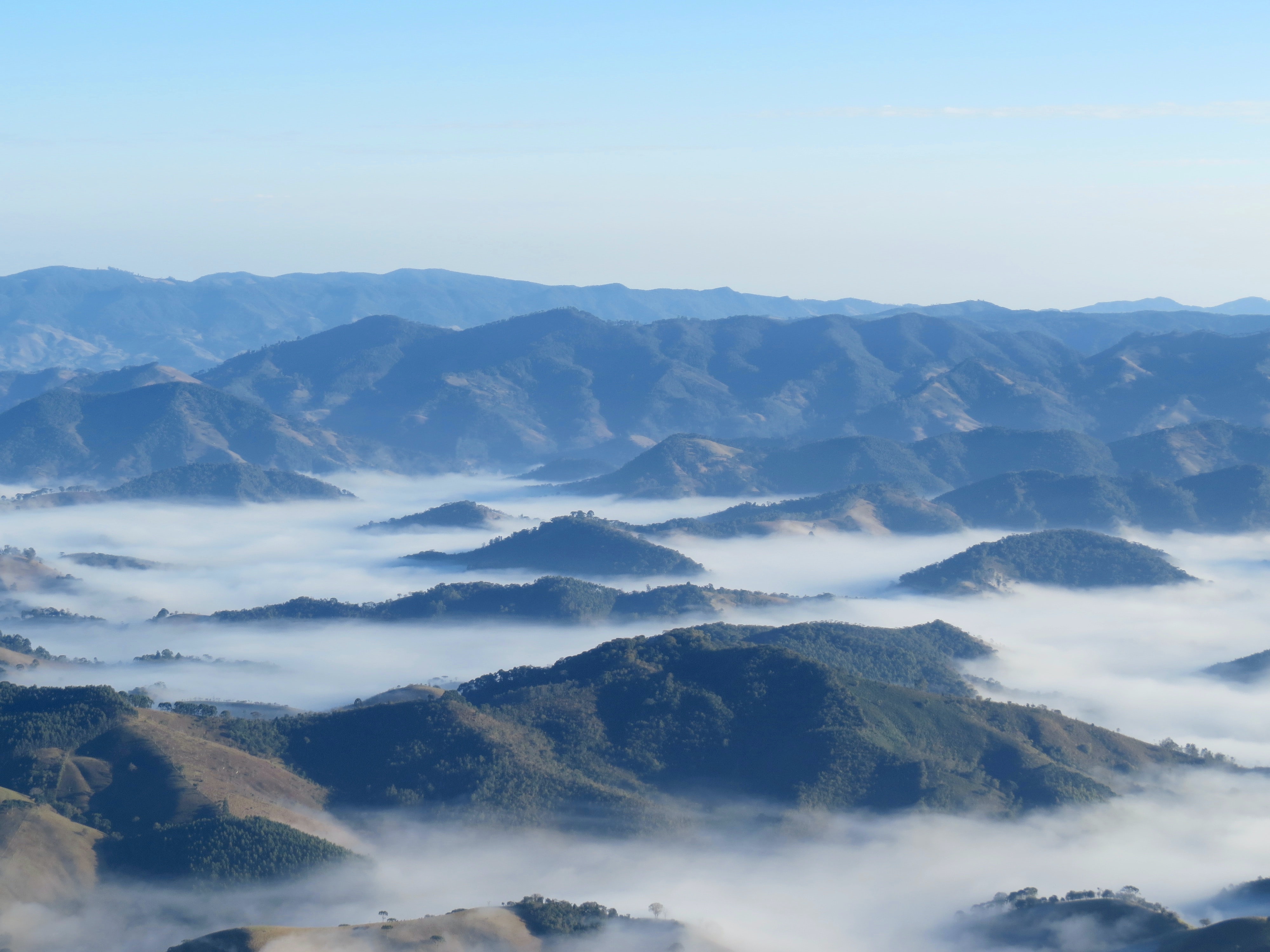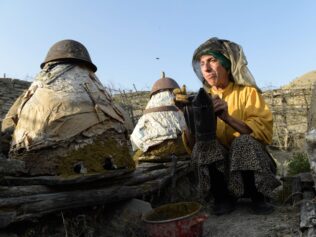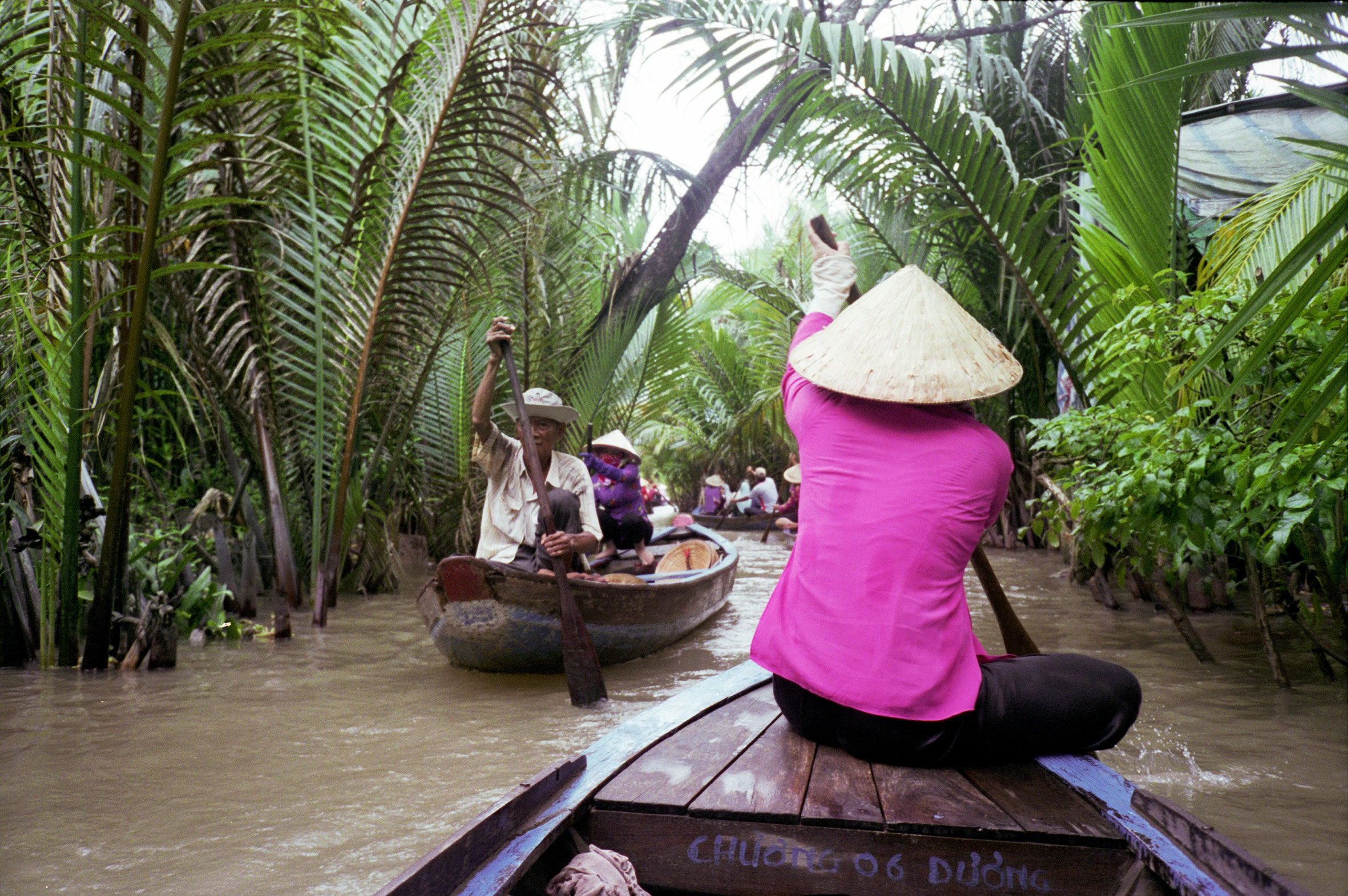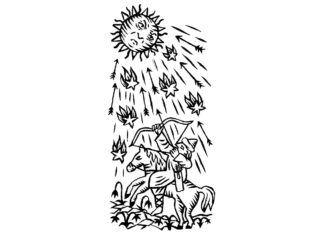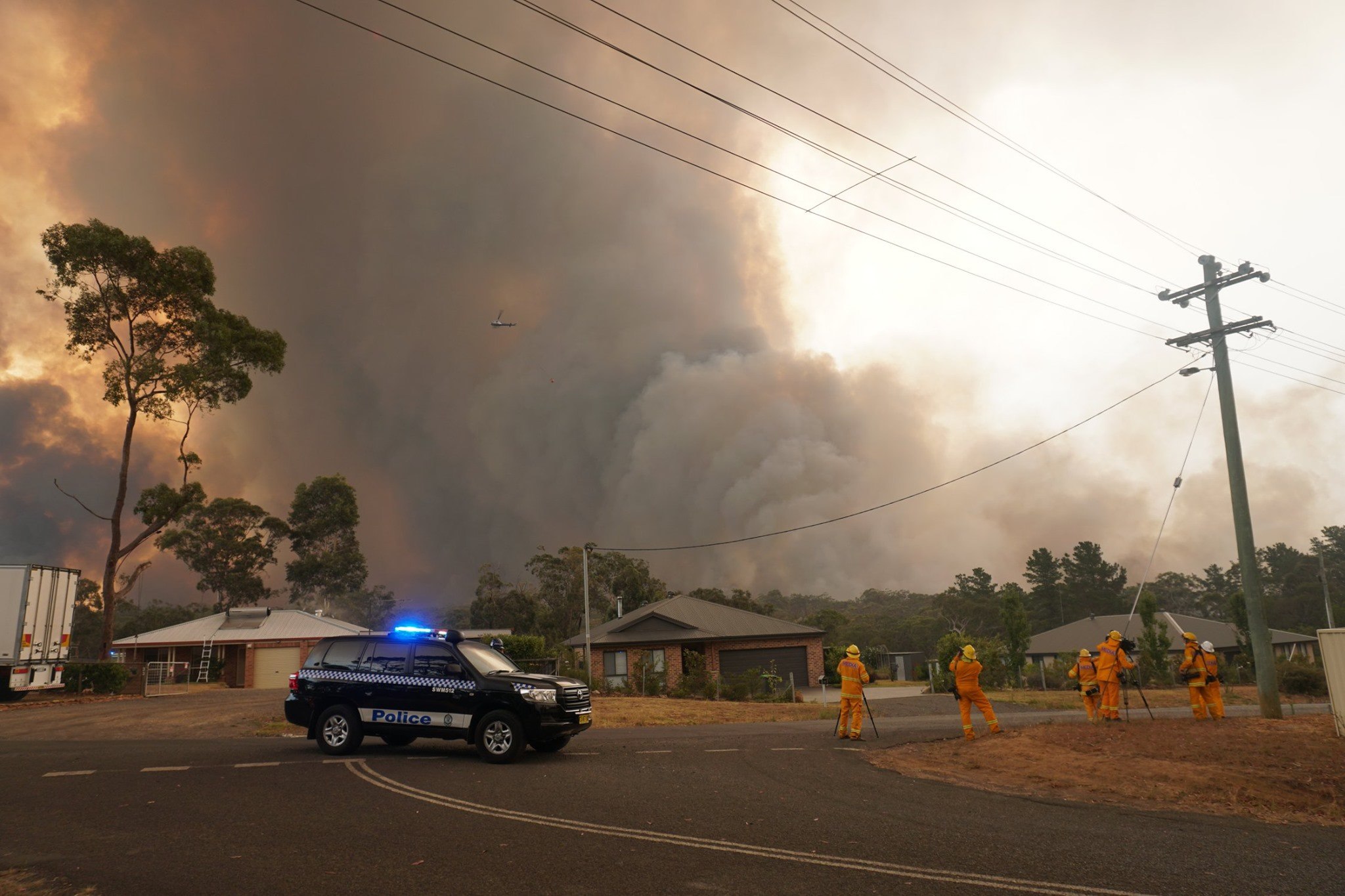
We are walking; the sun is slowly hiding behind the hill, and a never-ending trail is before us. We need to walk to the small village of Mercer on the main motorway, where we can stop for the night. The electronic GPS map indicates that we are on kilometre 2317; we still have two more to go this evening.
At first, we hiked along an overgrown and muddy river path. Then we climbed hills and crossed meadows where dangerous-looking bulls grazed, each of the paddocks surrounded by electric fences. It’s our second day in a row of marching an exhausting 40 kilometres through the Waikato region. In the twilight, with only a single torch between us, we climb up wooden stairs into an exotic forest, heading for the bald hill ahead of us. The trees above our heads are rustling, with furry creatures jumping between branches, possibly possums. It is the forest as described in Maori legends, where long lianas and epiphytes decorate the fern and kauri trees – endemic plants from the Jurassic period.
With relief, we come to an open clearing on the hill, from which there is a view of the bustling motorway. It has already become dark and we cannot make it to our destination tonight. In desperation, we pitch a tent next to a dirt road, not knowing whether or not permission is needed. We breathe with relief only when we are safely inside the tent, separated from New Zealand wilderness. The tent has been our home for four months; adrenaline is slowly falling. We wake up the next day with the sunrise. Only our hill, where colonial armies once fought with Maori tribes, protrudes underneath the white carpet of clouds.
Escaping the daily routine
We set off for New Zealand to escape the banality of everyday life. By chance, we once saw the film Wild (based on Cheryl Strayed’s memoir of the same name). I had goose bumps as I followed the fate of the lone girl trekking the Pacific Crest Trail from Mexico to Canada. Long distance walking – or thru-hiking – was something new and intriguing for me. After a few excursions with our local Ramblers club and individual hikes in Britain’s East Anglia region (where we live), we decided to undertake an overseas trek. We initially wanted to thru-hike the Pacific Crest Trail, just like our hero from the film, but through a coincidental suggestion from my mum, we chose the Te Araroa trail in New Zealand. Our adventure began in 2017, when we commenced our lengthy preparations and began learning hiking tips from social media. We focused on working and saving money for the expedition, but most importantly, we started hiking the mountains in England, Wales and Scotland. It was a great push for two overweight men in their 30s, but we simply couldn’t resist such an adventure. The dream of the thru-hike gave us a goal and hope; nature helped us to shake off our sedentary lifestyle.
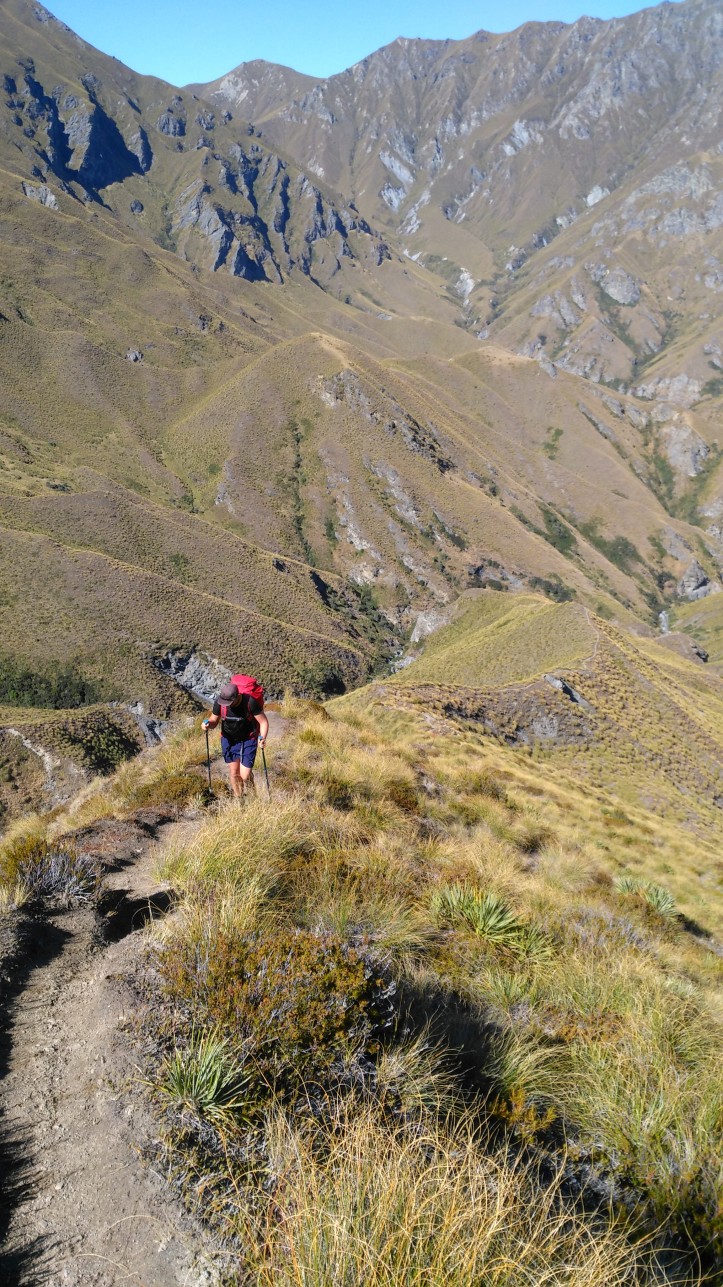
We started hiking the Te Araroa trail – which consists of 3000 kilometres – in January 2018. It stretches through the entire length of New Zealand and includes both the populated North Island and the unspoiled South Island. The trail is a selection of touristic and mountain tracks interconnected with each other, creating a ‘continuous’ path between the furthest points of the two Islands (Cook Strait is crossed by a ferry; the Whanganui River, in a canoe or kayak). Te Araroa was officially opened in 2011, so it is a young cousin of other well-established trails like the Pacific Crest Trail and Appalachian Trail – the most well-known long-distance trails in the US.
Every year, from October to January (the beginning of the New Zealand summer), eager hikers from all over the world travel to New Zealand to make the intense journey from Bluff to Cape Reinga (or the other way around).
Campsite euphoria
After 23 hours spent in the air, we reached Christchurch, the city furthest from Poland. Bluff, the capital city of oysters on the South Island, welcomed us with sunny weather. This was where, next to a yellow signpost indicating the distance to selected metropolises of the world, full of energy and with heavy backpacks, we started our long walk.
We entered the narrow and overgrown trail with the attitude that we would lose weight, gain a new perspective, and take a rest from the hustle and bustle of our regular lives in the East of England. After the first few days of traversing through the unpopulated southern region, I felt each muscle (even my intercostal ones); my feet were covered in blisters as we trudged the marshy grounds of the Longwood Forest. These views were alien to us and resembled forests from fairy tales, where the crooked trees, covered with golden lichens and moss, adopted the strangest poses, almost like caricatures. We were in the world of Tolkien, and at nights in the forest, we listened carefully in case orcs were lurking in the dark, or the trees above our heads were showing signs of life.
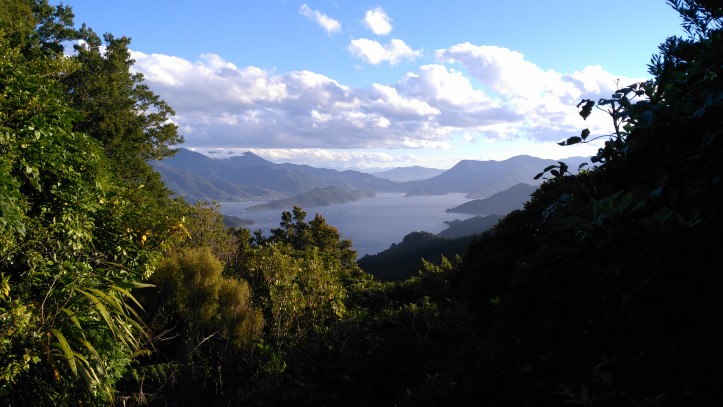
We tried to walk between 12 and 40 kilometres a day. The distance of our daily migration was determined by the location of mountain huts and campsites. We were learning a new way of life. Halfway through the trail, we hit our daily record of 45 kilometres as we reached the university town Palmerston North on the North Island. We were just leaving the Tararua Forest behind, where we had spent a night in the wild. It had been raining the whole day, but avidly and against the odds, soaked and covered in mud, we traversed over the jungly hills ahead of us. The following day was sunny, so relieved, we headed for the town. After a titanic struggle with the mountainous forest, we came to a motorway. Surrounded by large dairy farms, we covered the last few kilometres accompanied by the noisy and busy main road leading to the centre of the town. The opportunity of returning to civilization brought a sudden surge of sincere joy. We rented a cabin for a couple of days, where we would eat until full and not have to worry about having a roof over our heads if the weather changed unexpectedly. Fried chicken with crispy bread bought in the store put us in a state of euphoria. For the first time in my life, I was happy to see water running from the tap; water that we did not need to carry on our backs for 10 hours a day, nor look for in the forest.
At each step of this journey, we got to know other hikers. We met many self-confident and positive Americans among them. One of them surprised me in Pakituhi Hut, where we stayed overnight in the Otago region. A wacky American in a Hawaiian shirt appeared in the morning when I was scrubbing a pot in the sink. He sat down on the bench and started to eat his breakfast. It was during the first month of our trek. He revealed to me that Te Araroa was his third consecutive thru-hike, and that when he was finished, he would fly to Mexico to spend a few weeks with his girlfriend. Just as he appeared out of nowhere, he disappeared suddenly after his breakfast, a true wanderer.
We were equal
As a rule, reserved and physically-strong Swiss folk managed well with the mountain landscape of the Otago and Canterbury regions. Without difficulty, they would climb the hills ahead. For us though, the effort was unbearable. Takitimu track led us not only up steep paths, but also through valleys of ferns equipped with sharp foliage. On the same day, we also walked through the tussock fields, vast spaces covered with clumps of tall grasses. When I paused for a moment, I could not get over this view – here we were, two little dots on the vast grasslands, separated from humankind by high mountains.
We often shared our experiences with friendly Germans who showed a great fondness for nature and wildlife. We met the energetic Mareike – nicknamed ‘Carefree’ – while searching for mobile phone signal on the top of Breast Hill. From that moment on, we supported each other in our struggle with the unpredictable New Zealand nature.
The most beautiful moments were those spent together at the campsite, after setting up the tent, when everyone was sitting down to eat and chat. We felt like we were all part of one big tribe.
From numerous conversations with others, we inferred that some approached the route with devotion, following every single kilometre – they called themselves purists. Others were less worried about strictly following the trail. They wanted also to see the country, which is why they would come off the trail and then re-appear on it again later. We often escaped the elements – for example, the cyclone Gita that found us in the Southern Alps, near a town called Twizel. We were guided by caution. We did not face the Richmond Range, but we walked through the final stretch of the South Island, the Queen Charlotte Track, as a round trip.
Sometimes, the motivation to walk came thanks to the support of others. A Māori chap with the nickname ‘Ra’ and a full face, tā moko tattoo appeared on the mountain track Motatapu around the same time that we met a humorous Belgian guy, Steven. These two athletic men – one in his 50s and the other one our age – coped well with the demanding mountain crossing, and on top of that were great companions on our collective adventure. Although we often ended up behind them, we usually managed to reach the same campsites in the evenings or after a few days. Days free of hiking, called ‘zero days’, were a great opportunity to get to know each other better. We spent four such days on a campsite in Wanaka, where we met a young Belgian hiker, Anouck. It felt like being a teenager again – our little group of friends hanging out together on the beach at the post-glacial lake, feeding on fish and kūmara chips (sweet potatoes in Māori). We talked about the route for hours, analysed maps, and exchanged information about supplies and equipment.
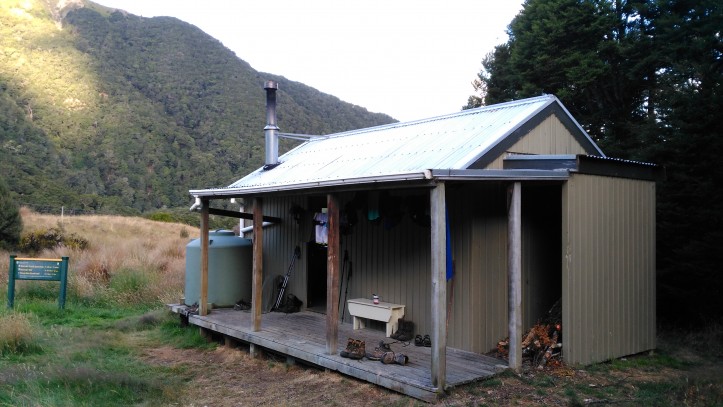
Our little tribe of wanderers was following the trail from south to north. So, in hiking jargon, we were ‘NOBO’, meaning northbound hikers. Other walkers we met on the trail – and with whom we exchanged tips – were part of the SOBO group: southbound. We were, however, all in this together: crossing through rapid torrents, climbing steep ranges, sleeping in huts where possums lived, and cooking powder food in the evenings. We were intrigued by wildlife, especially the curious weka birds we saw on the campsites. We were all equal on the trail.
Towards Cape Reinga
We met many hikers on the South Island, whereas on the North Island we had more direct contact with the locals. Nature was still our main companion, even though we were passing through the largest cities of New Zealand, such as Wellington, Hamilton and the capital city Auckland. At every step, we watched the merging of Māori, European and Asian cultures. Sometimes we had to leave the trail for supplies or to rest, and then we hitch-hiked back. New Zealand is a land for adventure seekers, and New Zealanders (or Kiwis) willingly offer rides to backpackers. One such trip took place at the end of our journey, from the town Kaitaia to the coastal village of Ahipara. When a storm broke, someone stopped their car to save us from getting soaked. He was a friendly surfer driving a jeep, who not only gave us a lift but also showed us the neighbourhood. Another time, a driver stopped to ask us about our hike and gave us sandwiches. The goodness and selflessness of people captivated us at every step – and there were many of them.
After five and a half months, we reached our destination – a lighthouse on the head of Cape Reinga, a unique place for the Māori, where according to the legend, the souls of their loved ones travel down the cliff, towards the evergreen tree Pōhutukawa. Crossing the last 100 kilometres, I felt a sudden surge of emotions. We were alone on a long stretch of sandy beach; the noise of the wind and the sea dominated nature. Single grains of compressed sand began to wander the beach and chase toward Cape Reinga. We spent our last night on a pristine beach at the Twilight campsite with a young Danish couple and a noisy possum. It was the last time we observed the Milky Way and slept in the open air.
At the end of this endurance walk, on the final stretch of the magical Ninety Mile Beach, we were again back to normal life – next to the yellow signpost and a group of tourists visiting the lighthouse. They came on the coach. We had to break through a rocky and steep coastline, but we all had a common destination. We sat on the escarpment, bewildered. Silently, I was glazing at the merging waters of the Pacific Ocean and the Tasman Sea, which had a different shade of blue. The sea and us.
It was a very long hike, but we took it as more than just the kilometres. In one of the hostels on the trail, we found a few Māori phrases printed on the information board in the kitchen. Next to the explained phrase Te Araroa, which means ‘a long walk’, was also the phrase Te Ara Hou, which literally means ‘a new path’. In metaphysical terms, however, it is ‘a path of spiritual awakening’. In New Zealand, we started by counting kilometres and improving our physical condition. When we reached our destination, we discovered that this expedition had brought us back to life.
